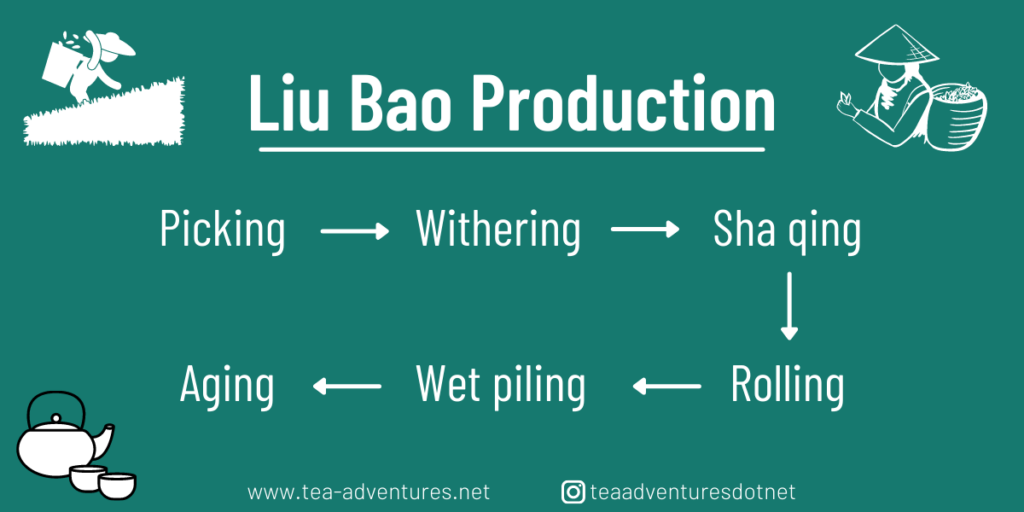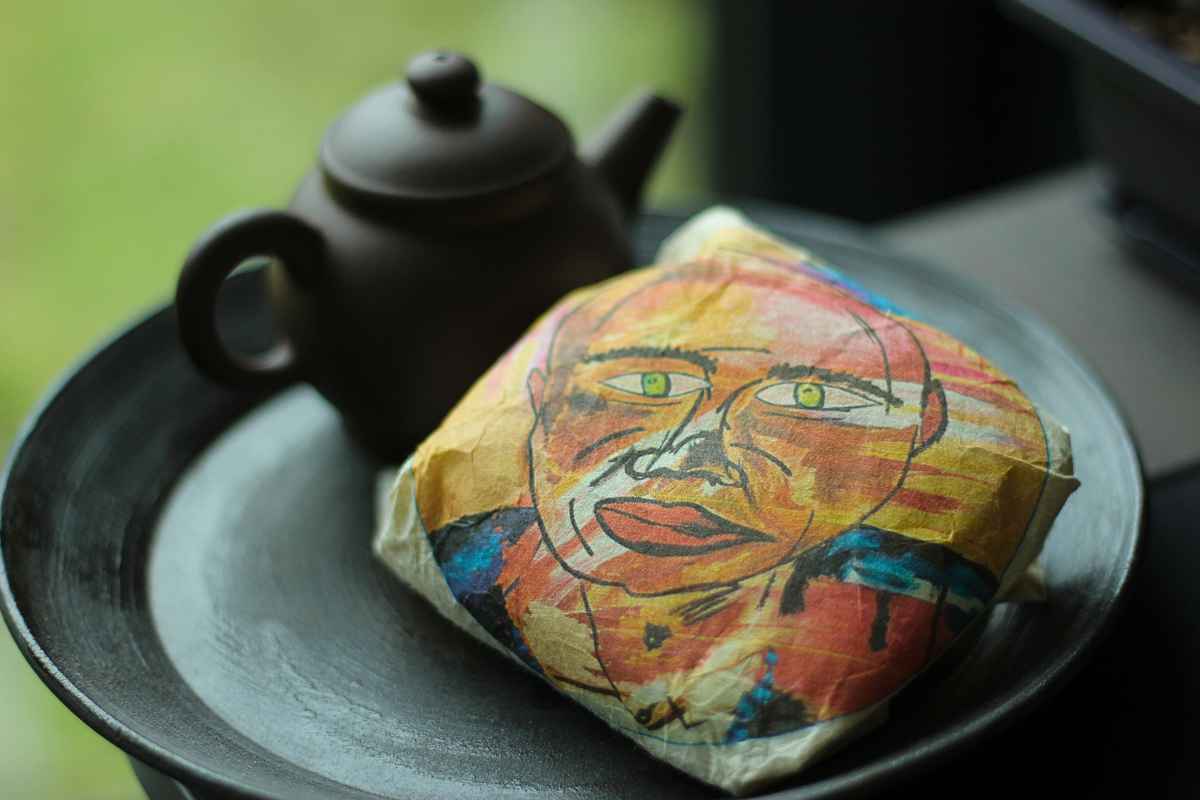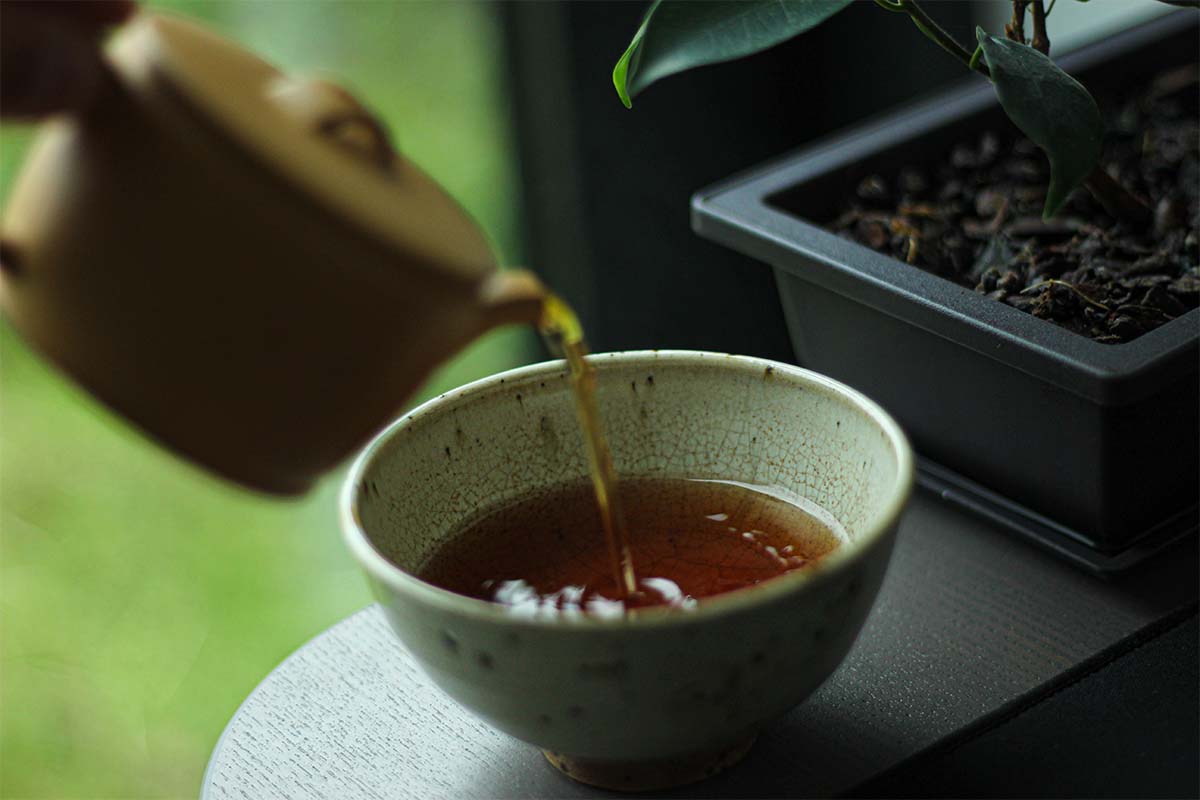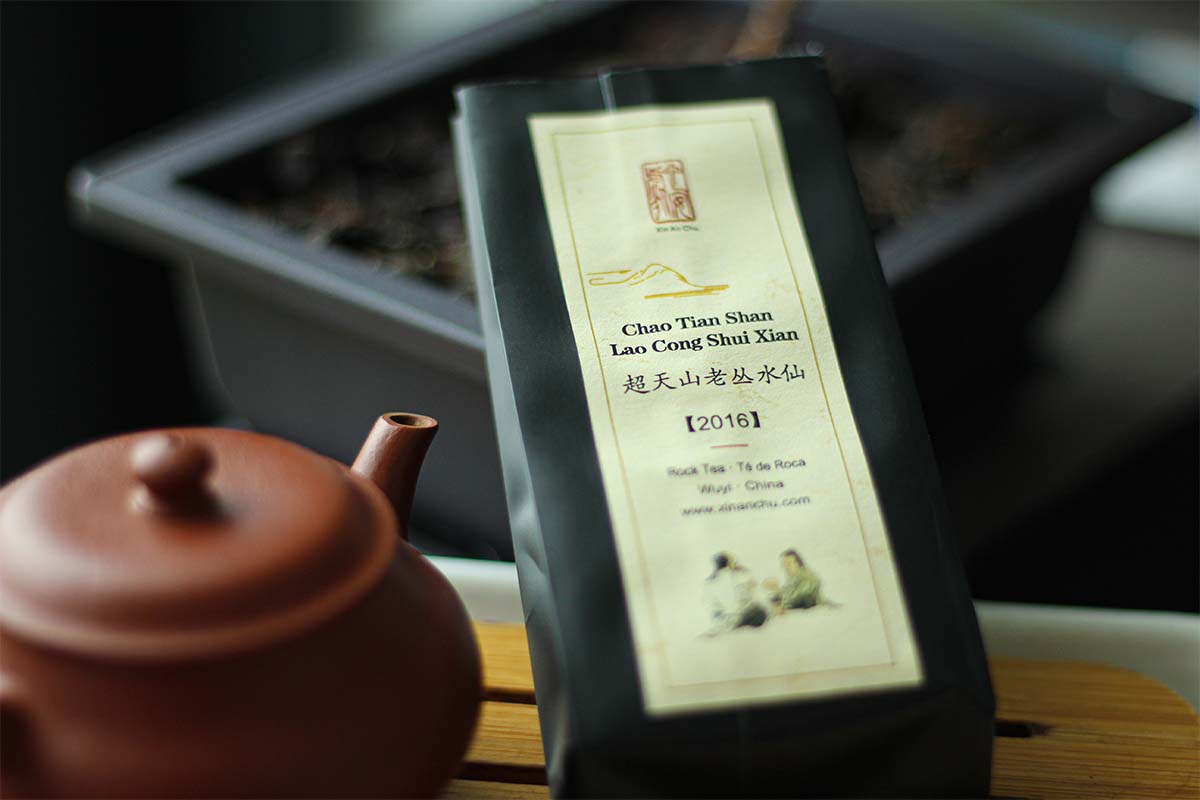Liu Bao tea is a dark/fermented type of tea from Guangxi province. It’s rather unknown in the west so not many people know how it is processed. This article gives a full overview of how it’s processed and which steps are crucial in the production process.
Liu Bao tea is produced by picking a bud and up to four tea leaves. These are then withered and heated to stop the oxidation process. Next, the tea leaves are rolled and artificially fermented through wet piling. The final step in the production step is aging the freshly-made leaves for 1-3 years.
Liu Bao processing
Liu Bao is an underappreciated type of hēi chá from Guangxi province. In the past, it was described as ‘poor man’s puerh’, but this attitude is slowly changing. It was a lot cheaper than pu-erh tea, which has also changed over the last few decades.

Don’t know where to buy tea online? I made a list of over 300 online tea shops and I keep updating it regularly. You can check it over here
Liu Bao tea is classified as dark/fermented tea (hēi chá in Chinese). This means that it’s characterized by any type of fermentation. For Liu Bao, in particular, this fermentation is artificial and is an important step in the production process. However, this is one of the final steps in the process.

Picking
The first step in the production process of Liu Bao is picking the leaves. The tea trees that are picked to produce Liu Bao are located in several areas in Cangwu County, Mengshan County, and Wuzhou city in Guangxi province.
Those areas are ideal for growing tea because it’s hot and humid with plenty of rain. There is also a unique topography with a low central region that is surrounded by hills and mountains on all sides. Vegetation grows wildly on clay and sandy loam soil. The soil is rich in nutrients and provides microorganisms that are unique to Liu Bao tea.
Usually, a bud is picked together with three or four leaves. Traditionally, the leaves were picked during the day and processed at night.
Withering or drying
This is the second step in the production of Liu Bao tea and implies that tea leaves are evenly spread out on a flat surface to wither. The goal of this phase is to remove some moisture from the leaves and make them easier to process.
This step just involves letting the leaves dry before starting the next step in the production process.
Kill-green or sha qing
The third step in the production process is heating the leaves to stop oxidation. This step in Liu Bao production has changed quite a bit over the years. Originally, most Liu Bao was steamed three times: the first time during the sha qing process, the second time during the piling process, and a final time for compression.
Nowadays, Liu Bao is only fired once during the sha qing process. The leaves are not steamed anymore, but they are wok-fired in a wok of around 160°C.
The goal of this process is to stop the oxidation that takes place in the leaves. Once they are heated, the enzymes that are responsible for oxidation are deactivated.
Rolling the tea leaves
Once the sha qing process is finished, it’s time to start rolling the leaves. This can be done by hand or by a machine. The goal of rolling the tea leaves is to shape them while keeping the leaves intact.
Breaking down the cell walls is less important because the wet piling that is done next damages the cell walls a lot more.
Fermentation through wet piling
This is a really important step in the production process of Liu Bao and is what makes it a type of hēi chá. The semi-processed tea leaves are piled onto big heaps in a hot and humid environment. The leaves can also be fermented in bamboo baskets, but most modern Liu Bao is produced by artificially fermenting the leaves on a flat surface.
The goal of this step is to artificially ferment the tea leaves. This step is similar to what is done when producing shou pu-erh. The leaves are turned on a regular basis and the producer keeps a close eye on how the tea is fermenting. This process can take several weeks.
This step defines the character, flavor, and aroma of the tea so it’s a really important step. Keep in mind that this step is only done when the producer wants to produce cooked Liu Bao. Raw Liu Bao is not wet piled but piled in a drier environment for only 30 hours.
Aging
After the fermentation process, the tea leaves are dried a bit more and then packed into baskets. Traditionally, 40-50kg baskets were used and these big baskets were optimal for air circulation. Nowadays, it’s common to put Liu Bao into smaller baskets because of different market demands. In some cases, Liu Bao is pressed into bricks, but this is less ideal for air circulation.
Liu Bao was stored in air-raid tunnels for several years to let it rest before it was sold. It was only after 1-3 years that the baskets were moved again and put into warehouses and storage facilities to age further.
Because of the rising demand for Liu Bao, the initial resting phase is sometimes cut short. However, just like with pu-erh tea, the older Liu Bao gets, the better it becomes.




